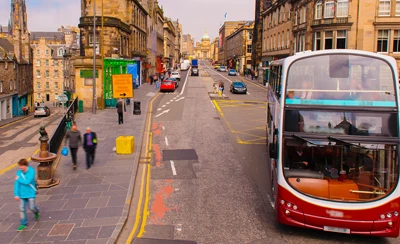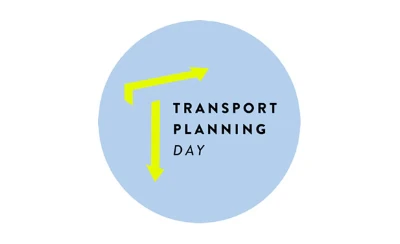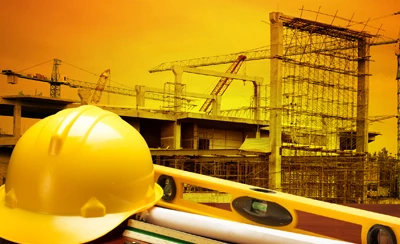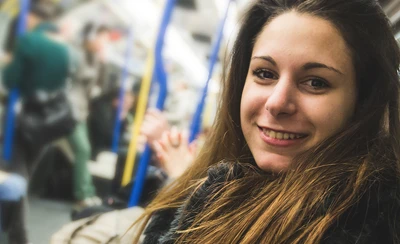A transport system that is accessible for everyone - how do we make this happen ?
Jim Morey, Freelance Consultant specialising in accessibility of streets and environments and TPS Board Member
Introduction
With this year’s Transport Planning Day campaign focussing on accessibility, equality, diversity and inclusion (EDI), now is a good time to take a fresh look at disability; to know who these ‘disabled’ people really are and to understand what this means for our profession.
Transport planning practitioners will be familiar with accessibility and EDI as concepts. Some will already be doing work in this field, for example writing equality impact assessments. However, not everybody will be fully aware of the range of different needs out there, how these are evolving and what we should be doing about it.
Disability and impairment
The Equality Act 2010 (EqA) defines a ‘disability’ as being: ‘a physical or mental impairment that has a ‘substantial’ and ‘long-term’ negative effect on a person’s ability to do normal daily activities’. By this definition, it is estimated that there are around 14 million disabled people in the UK. Although some will have been disabled since birth or early childhood, many more will have acquired their impairment(s) through illness or injury at some point during their lifetime. Others will have congenital conditions which have manifest themselves later in life or which have worsened with age. Some impairments will be the result of ageing itself.
The most commonly-used symbol for disability is the wheelchair, despite fewer than a tenth of all disabled people using one. But even wheelchair users are not one homogenous group; the needs of an otherwise healthy lower-limb amputee will be very different to somebody who is in the latter stages of a degenerative disease such as: Multiple Sclerosis, Ataxia–Telangiectasia or Huntington's Chorea. 50% of wheelchair users cannot walk or stand at all. Similarly, the experiences of a person who has been totally blind (or deaf) since birth will be different to somebody who has gradually lost their sight (or hearing) in later life.
Only a minority of ‘disabled’ people identify as ‘disabled’. Whether they do so or not has no bearing on how ‘visible’ their impairments are. In fact, most impairments may not be apparent to a casual onlooker unless a person uses a conspicuous mobility aid or has obvious difficulties. For example, people with Chronic Obstructive Pulmonary Disease (COPD) may walk completely unaided until their body shuts down the oxygen supply to their limbs and they then need to rest immediately.
The term ‘hidden disabilities’ covers cognitive impairments such as: mental illness, autism spectrum disorders (ASD) and dementia. The population generally is ageing and is more likely to suffer from such diseases as COPD, Type 2 Diabetes, Heart Disease and Dementia. The Coronavirus pandemic has also presented many new challenges for disabled people.
Then we have ‘intersectionality’; this is where people not only have single or often multiple impairments but may also belong to another demographic that is disadvantaged as a result of their ethnicity, sex / gender, age, pregnancy / parenthood or other status. This contrives to compound the barriers faced when attempting to access goods and services. More about ‘intersectionality’ may be found in the book: ‘Disability Visibility: First-Person Stories from the Twenty-First Century’, edited by Alice Wong. I would also recommend reading ‘Invisible Women’ by Caroline Criado Perez for an understanding of some of the complex health and sociological intersectionality faced by women (especially those from disadvantaged backgrounds).
Under the ‘social model’ definition of disability (which is the definition that we should be using), a person is ‘disabled’ by an environment which is inaccessible to them; a factor which may not necessarily be proportionate to their actual impairment. This is in contrast to the ‘medical model’ of disability which assigns the disability as being the direct result of a person’s own impairment. Prior to the 19thcentury, disability would have been much more ‘mainstream’; disease and serious injuries were so common that over 60% of the population would have been considered ‘disabled’ by the modern EqA definition.
I hope that I have made the point that disability exists everywhere and in multiple forms. It is clearly not a minority issue, rather it is an issue which will only grow as the population ages. The needs of each individual are different, complex and variable.
Positive steps in transport
Transport (in the general sense) is a public ‘good’; it is there to enable all of us to play our part in society and the economy.Therefore it is imperative that we plan, design and manage our transport environments in such a way that they are accessible and inclusive to as many users as possible.
The past few decades have seen the introduction and evolution of primary anti-discrimination / equalities legislation. This in turn has led to sector-specific secondary regulation and technical design standards, as well as training and guidance that are intended to improve accessibility and inclusivity in many aspects of streets and transport.
Buses and trains now not only have spaces for wheelchairs, but also have priority seating for ambulant passengers with additional needs. The blue badge parking scheme has been extended to people with some hidden disabilities. Many transport interchanges have step-free access to public areas. The attitudes of transport staff towards disabled passengers has improved and Information provision is now much better. Even our streets and crossing facilities are more accessible than before. Mobility and other aids have been developed that are intended to improve accessibility; e.g. new technology such as mobile phone apps.
Where are we now?
I regularly undertake access audits of transport environments, streets and public spaces. I also conduct direct engagement with disabled people who are transport users. Despite all the improvements listed above, it is still easy to find barriers to access, even in places which have been built to notionally-accessible standards. Attempts to retrospectively improve access frequently result in compromises being made, especially if a balance is to be struck between different user, staff or operational requirements.
In 2018 the UK Government unveiled its wide-ranging ‘Inclusive Transport Strategy’, which included many actions that are currently ongoing, such as the updating of ‘Inclusive Mobility’ and the tactile paving guidance. Other improvements have been piecemeal, such as changes to the Bus Services Act 2017 to improve information provision.
Alongside these we have witnessed other changes to planning guidance, measures to encourage sustainable and active travel.
The COVID-19 pandemic has been a catalyst for more changes to our streets and the way we travel.
What can Transport Planning Professionals do?
There is still a need to join up the dots between the disparate parts of the planning system, our transport infrastructure and the needs of disabled and other disadvantaged users. Adhering to the technical / regulatory requirements alone is not enough to deliver accessibility or inclusivity. Transport accessibility needs to be viewed holistically by practitioners who have a good understanding of the issues and who are sufficiently empowered to do something about it. For example: step-free access within a station is of limited benefit unless there is step-free access to the station from the area it serves; although the separate regulatory and funding constraints of each element conspire to make full, accessible integration, very difficult.
Here is where the transport planning profession comes into its own:
Transport planners sit in the middle of a vast ‘Venn diagram’ of overlapping skills, disciplines and interests in the planning, transport, highways and other sectors. We are like ringmasters in a circus, charged with bringing all these elements together. It is up to us to ensure that the complex, diverse needs of all people are considered. Doing so will require user engagement, often with people who are hard to reach - and occasionally with those whose views will challenge us.
In the past, accessibility concerns were often trumped by other competing demands, but I hope that I have demonstrated how the need for ‘universal’ design / operation should be integral to everything that we do.
Our profession has successfully embraced and advocated for sustainability. Now we need to do the same for accessibility, equality, diversity and inclusion.
Finally, I would urge colleagues to pursue Continuing Professional Development (CPD) opportunities to learn more about Accessibility, as well as Equality, Diversity and Inclusion (EDI). This is the theme of Transport Planning Day 2021 and also of a number of associated TPS events planned around it.
If you haven’t done so already, I recommend reading the papers submitted by the finalists of this year’s TPS Bursary Competition. These are available to view on the TPS website.
The professional institutions representing the planning, highways and transport industry regularly run CPD on EDI-related subjects, as do specialist accessibility professional organisations such as: the Access Association, Centre for Accessible Environments and the National Register of Access Consultants.
-----------------
Jim Morey MSc FIHE MILT MCIHT MTPS is a freelance consultant specialising in the accessibility of streets and transport environments and is a co-opted director on the board of the Transport Planning Society.
Follow Jim on LinkedIn and via https://www.facebook.com/TransportAccessibilitySurvey on facebook








